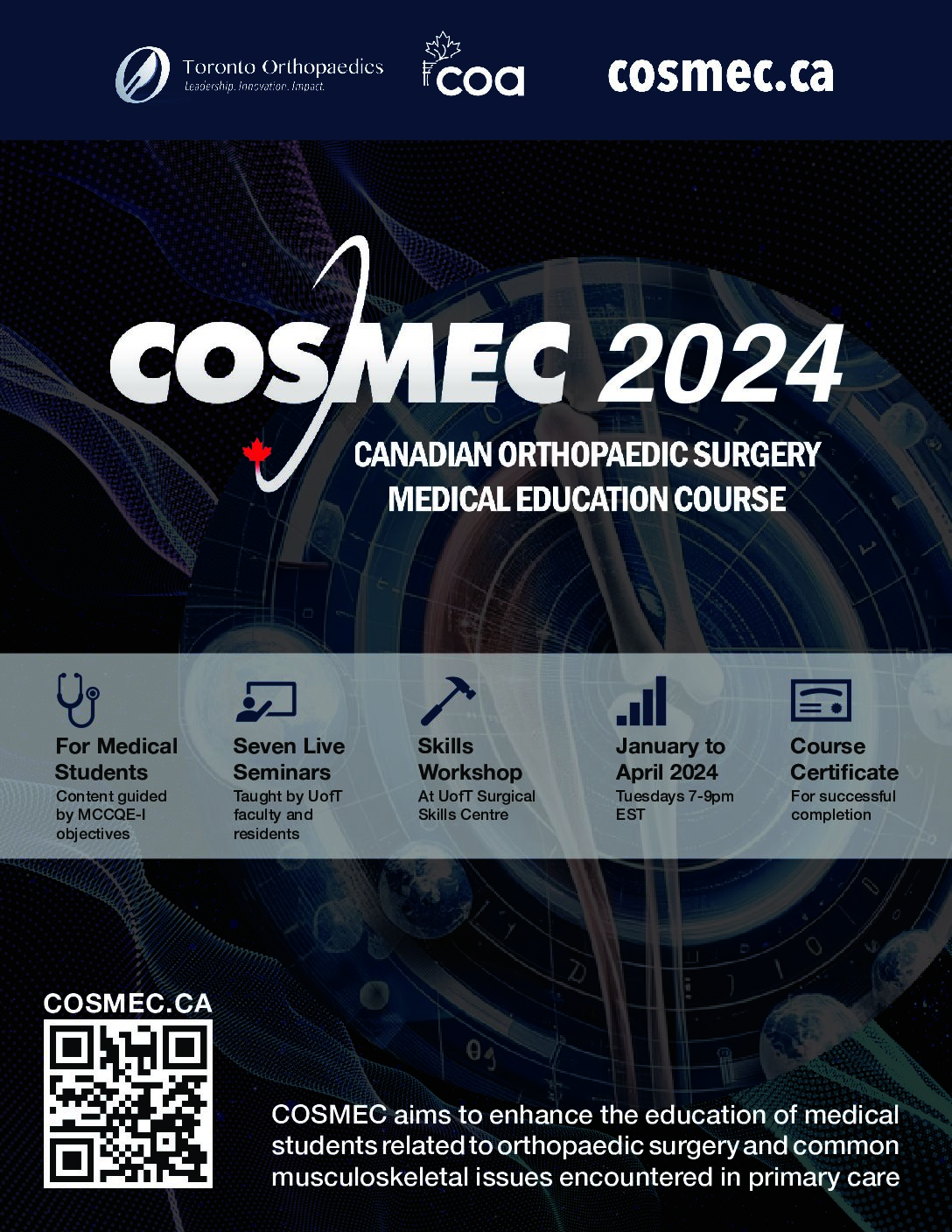I remember my first experience reading an orthopedic progress/consult note. I was thoroughly confused. All I saw was “SILT, EHL, ORIF, IMN, AROM” and at the time, I had no idea what any of that meant. A good understanding of what these terms mean can help you get a better grasp of what is going on and can help you write the ortho note if given the chance as a 4th year student/intern. So, we are going to go over a sample note and breakdown some of the terms commonly found. We may also touch on some of the pertinent things to comment on in a note.
Example note:
Orthopaedic Consult note
CC- Right leg pain
HPI- 65 y/o F presents s/p GLF presents to ED with right leg pain. Patient was walking when he tripped and felt a snap in her right leg and fell to the ground. She felt an immediate sharp pain to her right leg. There was no LOC. Patient denies any numbness or tingling in her lower extremities.
Terms: GLF- ground level fall. s/p- status post, LOC- loss of consciousness
ROS, PSH, PMH, FH, SH, Allergies
I’m not going to go over ROS through SH, it’s pretty general/standard across medicine.
Physical Exam:
General: No acute distress, Alert and Oriented x3
Resp: Non-laboured breathing
Abdomen: soft, non-tender
Extremities:
RUE:
Inspection- No erythema, swelling, atrophy, hypertrophy, abrasions, or lacerations noted.
Palpation- No TTP
ROM- Full ROM about the shoulder, elbow, wrist.
Strength- 5/5 AIN/PIN/U
NV- SILT M/R/U, +2 Radial +2 ulnar pulse
LUE:
Inspection- No erythema, swelling, atrophy, hypertrophy, abrasions, or lacerations noted.
Palpation- No TTP
ROM- Full ROM about the shoulder, elbow, wrist.
Strength- 5/5 AIN/PIN/U
NV- SILT M/R/U, +2 Radial +2 ulnar pulse
Terms:
TTP- Tenderness to Palpation
Motor/Strength:
- AIN- Anterior Interosseous Nerve (Typically tested by having the patient make an A-ok sign)
- PIN- Posterior Interosseous Nerve (typically tested by having the patient do a thumbs up)
- U- Ulnar nerve (typically tested by having the patient cross their fingers)
SILT- Sensation intact to light touch,
- M-Median (nerve)
- R-radial (nerve)
- U- Ulnar (Nerve)
RLE:
Inspection- Obvious deformity about the leg, open wound noted about the right leg, 10cmx5cm with exposed bone and soft tissue. Swelling noted about the right leg. No abrasions noted about the thigh
Palpation- TTP about right leg
ROM- Decreased ROM secondary to pain
Strength- 3/5 EHL, FHL, TA, TP, Gastroc, EDL, FDL
NV- SILT dp/sp/t, +2 DP/PT
LLE:
Inspection- No deformity, abrasions, lacerations, atrophy, or hypertrophy noted.
Palpation- Non TTP
ROM- Full ROM
Strength- 5/5 EHL, FHL, TA, TP Gastroc, EDL, FDL
NV- SILT dp/sp/t, +2 DP/PT
Terms:
Strength/Motor-
- EHL- Extensor Hallicus Longus (big toe extension)
- FHL- Flexor hallicus longus (big toe flexion)
- TA- tibialis anterior (ankle dorsiflexion)
- TP/Gastroc- Tibialis Posterior ( ankle plantarflexion)
- EDL- extensor digitorum longus (extension of the 2-5th toes)
- FDL- flexor digitorum longus ( flexion of the 2nd-5th toes)
NV- Neurovascular status
- DP- Dorsalis pedis pulse
- PT- Posterior tibialis pulse
Imaging: Radio graphic findings consistent with mid shaft fracture of the tibia
Assessment: 65 y/o M s/p GLF with Right open Grade III fx of the tibia.
Plan: IMN of Right tibia
So typically you test all of these components when you examine the patient. A couple more terms and abbreviations you may see/use in an ortho note are the following:
Weight bearing abbreviations:
WBAT- Weight bearing as tolerated
PWB- Partial weight bearing
TTWB- Toe touch weight bearing
NWB- non-weight bearing
Range of motion abbreviations:
AROM- active range of motion
PROM- the thing you did your senior year of high school with that really cute…. Oh wait.. Passive range of motion
Ortho abbreviations
ORIF- Open reduction and internal fixation (the bone is put back into place and fixed using an implant- you are physically manipulating the bone)
IMN- Intramedullary nailing – ( a nail is inserted inside of the canal of the bone)
Ex-fix- External Fixator (rods and pins inserted to the bone that is outside of the skin)
I hope this helps you understand Ortho notes and abbreviations that are commonly used!
Written By: Wendell Cole, MD
Want to learn more? Check out our Nailed It Ortho podcast below!







